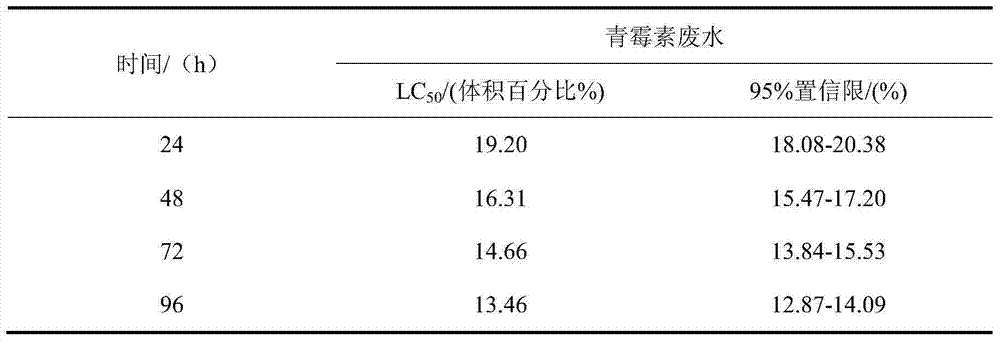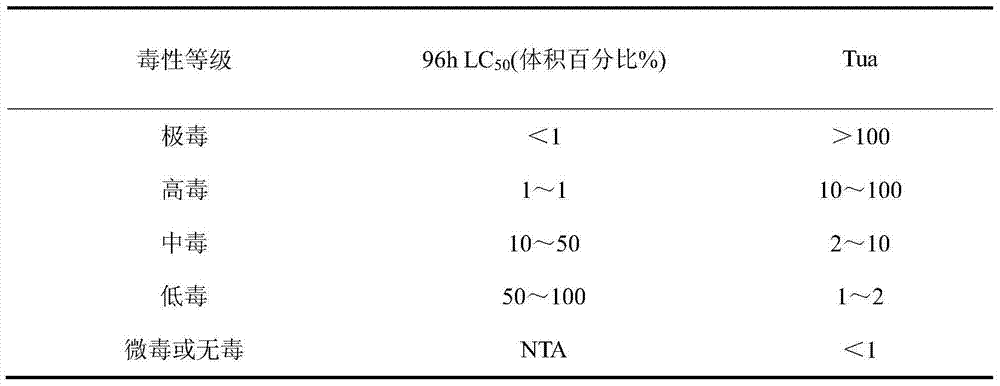Method for testing typical antibiotics wastewater toxicity by using zebra fishes
A technology of antibiotic wastewater and testing method, applied in the field of environmental toxicology, can solve problems such as the impact of higher organisms that cannot represent antibiotic wastewater
- Summary
- Abstract
- Description
- Claims
- Application Information
AI Technical Summary
Problems solved by technology
Method used
Image
Examples
example 1
[0038] Hereinafter, taking penicillin wastewater as an example, the specific implementation of the toxicity testing method proposed by the present invention will be described.
[0039] The juvenile zebrafish (Zebra Fish) was selected as the test organism. The zebrafish was provided by the Experimental Animal Center of Hebei Medical University, with a body length of (34.05±0.43) mm and a body weight of (0.24±0.03) g. The fish used in the experiment were sterilized by 5% saline and then entered into the laboratory. They were bred in the laboratory for 7 days with dechlorinated tap water aerated for 48 hours. They were not fed the day before and during the experiment to avoid the influence of bait on the experiment. The test conditions meet the requirements.
[0040] (1) Pre-test method Put 20L of test solution in a 50cm×20cm×25cm glass aquarium. The test solution is a mixture of penicillin wastewater and dechlorinated tap water.
PUM
 Login to View More
Login to View More Abstract
Description
Claims
Application Information
 Login to View More
Login to View More - R&D
- Intellectual Property
- Life Sciences
- Materials
- Tech Scout
- Unparalleled Data Quality
- Higher Quality Content
- 60% Fewer Hallucinations
Browse by: Latest US Patents, China's latest patents, Technical Efficacy Thesaurus, Application Domain, Technology Topic, Popular Technical Reports.
© 2025 PatSnap. All rights reserved.Legal|Privacy policy|Modern Slavery Act Transparency Statement|Sitemap|About US| Contact US: help@patsnap.com



